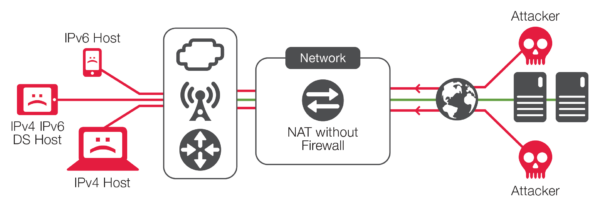Brief Information about NAT Firewall
Network Address Translation (NAT) Firewall is a crucial component in safeguarding networks from unauthorized access and potential cyber threats. Acting as a barrier between a private network and the internet, NAT Firewall helps manage and control inbound and outbound traffic by mapping multiple private IP addresses to a single public IP address. This process effectively shields internal network devices from direct exposure to external threats.
Expanding the Topic: NAT Firewall
NAT Firewall operates at the network layer (Layer 3) of the OSI model and is commonly deployed in routers and firewalls to manage and monitor internet traffic. It dynamically translates private IP addresses to public IP addresses, thereby masking the identities of individual devices within a network and providing an added layer of security.
Detailed Analysis of Key Features of NAT Firewall
Key Features of NAT Firewall:
- Address Translation: Translates private IP addresses to public IP addresses, allowing devices within a private network to communicate with external networks while maintaining anonymity.
- Packet Filtering: Examines data packets at the network layer to determine their source, destination, and content, enabling the firewall to selectively permit or deny traffic based on predefined rules.
- Stateful Inspection: Tracks the state of active connections to ensure that only legitimate packets are allowed through the firewall, enhancing security and preventing malicious activities.
Types of NAT Firewall
NAT Firewall can be classified into several types based on their functionality and deployment scenarios. The most common types include:
| Type | Description |
|---|---|
| Static NAT | Maps a fixed private IP address to a corresponding public IP address, facilitating one-to-one translation. |
| Dynamic NAT | Dynamically assigns public IP addresses from a pool to private IP addresses on an as-needed basis, conserving IP address space. |
| PAT (Port Address Translation) | Maps multiple private IP addresses to a single public IP address by utilizing unique port numbers, enabling many-to-one translation. |
Ways to Use NAT Firewall
NAT Firewall can be deployed in various scenarios to enhance network security and performance:
- Home Networks: Protects home networks from external threats by concealing the IP addresses of connected devices.
- Enterprise Networks: Safeguards corporate networks by controlling access to internal resources and preventing unauthorized access.
- Public Wi-Fi Hotspots: Secures public Wi-Fi networks by restricting access to sensitive information and mitigating the risk of cyber attacks.
Challenges and Solutions
While NAT Firewall offers significant security benefits, it also presents some challenges:
- Limited Peer-to-Peer Connectivity: NAT may hinder peer-to-peer communication due to the translation of IP addresses. This can be addressed through the use of techniques such as NAT traversal and UPnP (Universal Plug and Play) protocols.
- Complex Network Configuration: Managing and configuring NAT Firewall rules can be complex, especially in large-scale networks. Automation tools and centralized management solutions can simplify the process and enhance efficiency.
Characteristics and Comparisons
Characteristics of NAT Firewall:
- Security: Provides an additional layer of security by hiding internal IP addresses from external networks.
- Scalability: Supports scalability by allowing multiple devices to share a single public IP address.
- Compatibility: Compatible with various network protocols and applications, ensuring seamless integration into existing infrastructure.
Comparison with Similar Terms:
| Term | Description |
|---|---|
| NAT (Network Address Translation) | Translates private IP addresses to public IP addresses, enabling communication between private and public networks. |
| Firewall | Controls and monitors network traffic based on predefined security rules to prevent unauthorized access and malicious activities. |
Future Perspectives
As technology continues to evolve, NAT Firewall is expected to adapt and incorporate new features to address emerging security challenges. Future developments may include:
- Enhanced Threat Intelligence: Integration with artificial intelligence and machine learning algorithms to detect and mitigate advanced cyber threats in real-time.
- IoT Security: Implementation of NAT Firewall mechanisms to secure Internet of Things (IoT) devices and networks from potential vulnerabilities and attacks.
VPN and NAT Firewall
Virtual Private Networks (VPNs) can complement NAT Firewall by encrypting internet traffic and providing an additional layer of privacy and security. When combined, VPNs and NAT Firewall offer comprehensive protection against cyber threats and unauthorized access.
Resources for Further Information
For more information about NAT Firewall and related topics, please refer to the following resources:
- RFC 1631: The IP Network Address Translator (NAT)
- CISCO: Understanding NAT Firewalls
- Symantec: Network Address Translation (NAT) Explained


